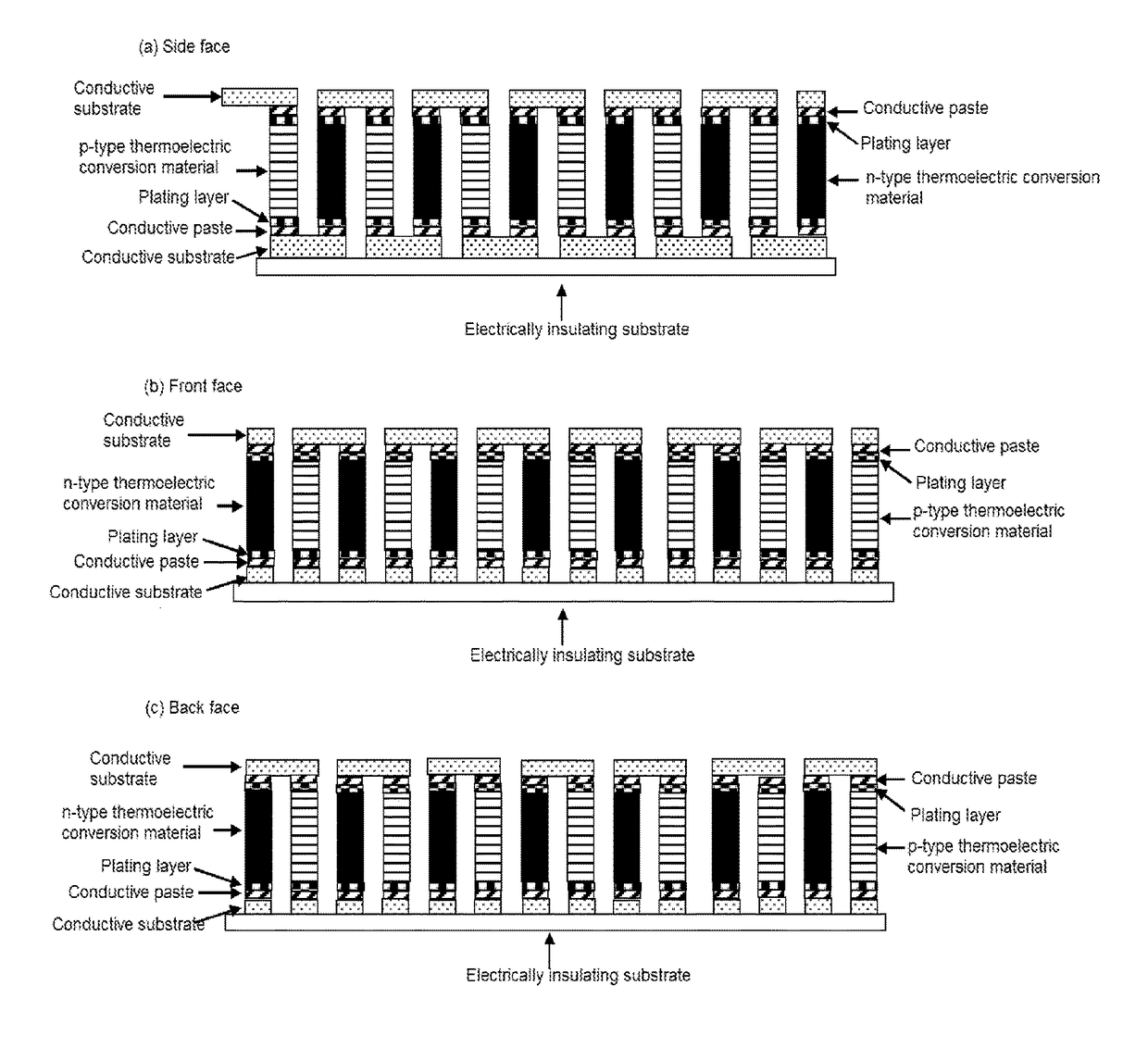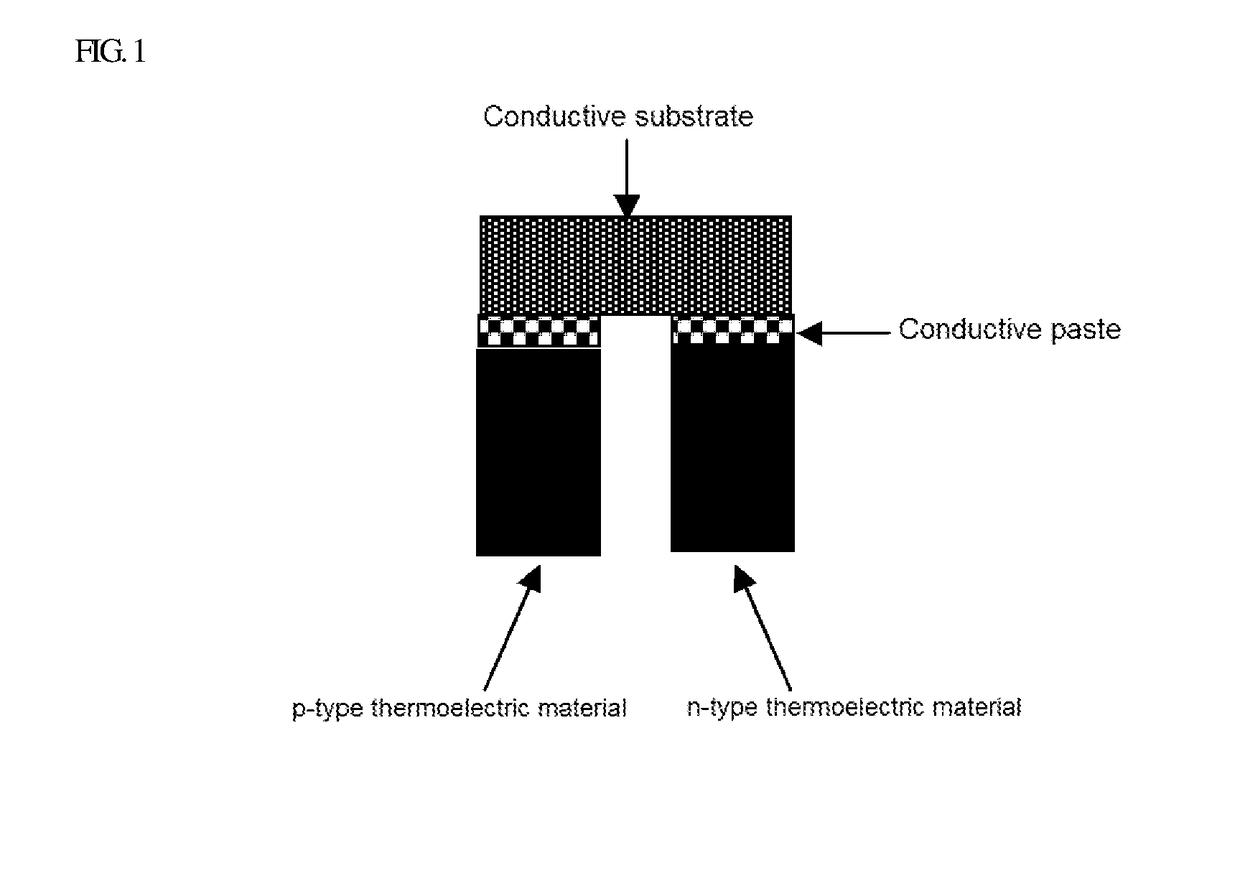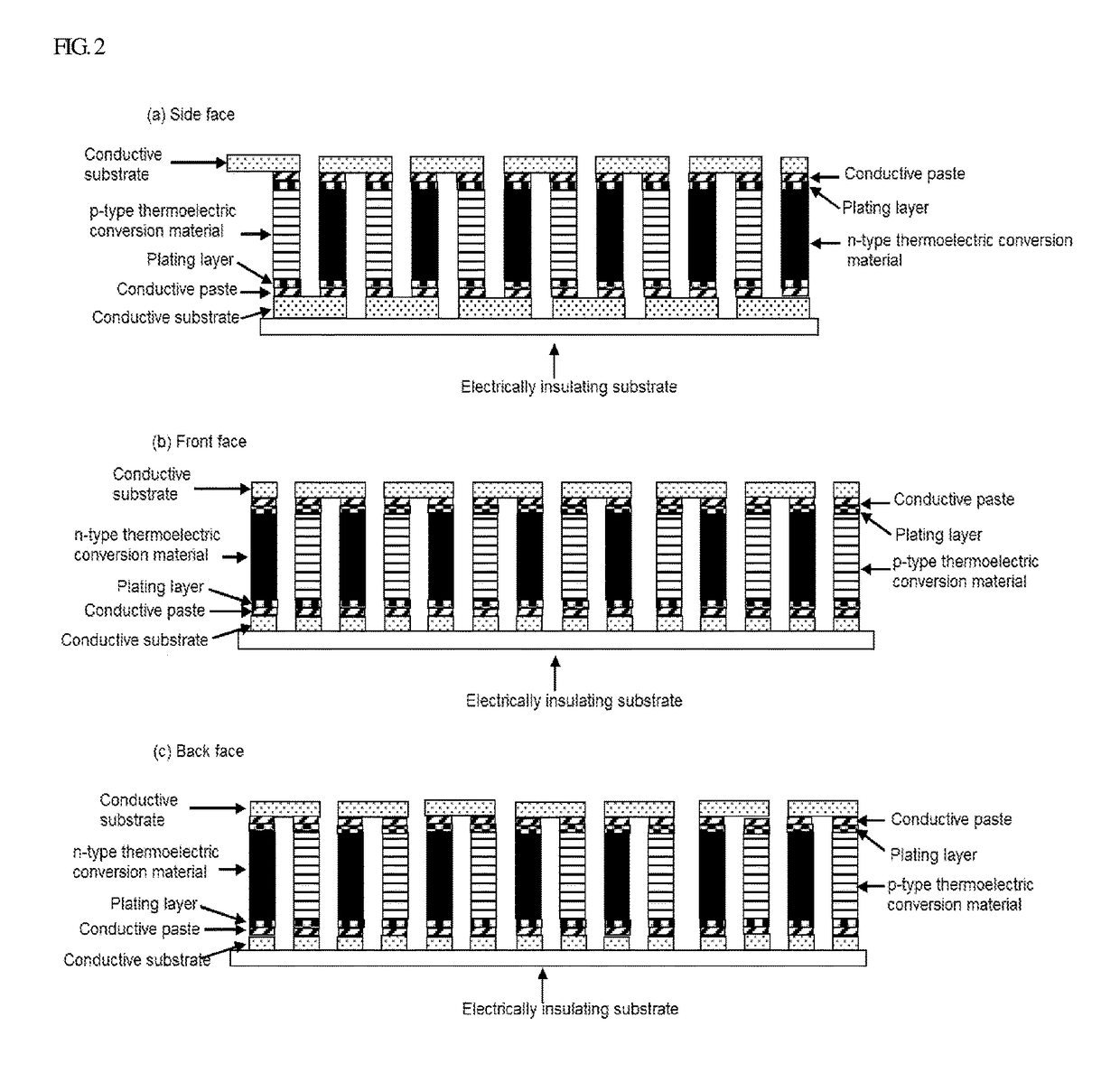Thermoelectric Conversion Element and Thermoelectric Conversion Module
a technology of thermoelectric conversion module and conversion element, which is applied in the direction of generator/motor, manufacturing tools, and so on, can solve the problems of oxidation, melting, and lagging in the development of thermoelectric conversion elements and thermoelectric generation modules, and achieve excellent thermoelectric conversion performance, excellent bonding strength, and excellent performan
- Summary
- Abstract
- Description
- Claims
- Application Information
AI Technical Summary
Benefits of technology
Problems solved by technology
Method used
Image
Examples
example 1
[0144]Production of p-Type Thermoelectric Conversion Material
[0145]A p-type thermoelectric conversion material represented by the compositional formula: MnSi1.75 was produced as follows.
[0146]First, small pieces of silicon (Si) and manganese (Mn) were weighed to a ratio of Mn:Si=1:1.75, and placed in a ceramic crucible, followed by melting in a high-frequency melting furnace. The melt was poured into a room-temperature metal crucible, and rapidly cooled for solidification. The obtained molten solidified product was pulverized using a zirconium crucible and a pestle, and sieved to obtain a powder having a particle size of 38 μm or less. This powder was pressed into a disk shape having a diameter of 10 cm and a thickness of about 5 mm.
[0147]This disk was put in a carbon mold, and subjected to hot-press sintering at 920° C. for 7 hours under uniaxial pressure of 11 MPa in a vacuum atmosphere. The hot-pressed, sintered body was cut into a prism shape having a cross-section of 3.5×3.5 mm...
examples 2 to 87
[0162]Thermoelectric conversion elements were produced as in Example 1 using the materials shown in Table 1 as the p-type thermoelectric conversion material, n-type thermoelectric conversion material, conductive substrate, and electrically insulating substrate. The method for disposing the insulating substrate at the high-temperature side and the insulating substrate at the low-temperature side is the same as that for disposing the aluminum oxide substrate in Example 1.
[0163]The “Noble metal mixture” column in Table 1 shows the types of noble metals incorporated in the conductive paste, in addition to silver; the “Mixed amount with respect to silver” column shows the amount of the noble metals in percent by weight, on the assumption that the silver amount was 100 wt %. The conductive substrates used at the high-temperature and low-temperature sides are respectively shown as a high-temperature-side electrode material and a low-temperature-side electrode material.
[0164]A test was perf...
example 88
Production of Thermoelectric Conversion Module
[0165]Seven silver sheets having a width of 7 mm, a length of 7 mm, and a thickness of 0.5 mm were placed on an aluminum oxide substrate with a size of 3×3 cm and a thickness of 0.8 mm at intervals appropriate to allow the thermoelectric conversion materials to be connected.
[0166]As p-type thermoelectric conversion materials and n-type thermoelectric conversion materials, materials in a prism shape having a cross-section of 3.5×7 mm and a length of 10 mm produced as in Example 1 were used.
[0167]The same conductive paste as used in Example 1 was applied to both of the 3.5 mm×7 mm surfaces of each of the thermoelectric conversion materials, and one pair of the p-type thermoelectric conversion material and n-type thermoelectric conversion material was placed on each silver sheet disposed on the aluminum oxide substrate. Altogether, 14 each of the p-type thermoelectric conversion materials and n-type thermoelectric conversion materials were ...
PUM
| Property | Measurement | Unit |
|---|---|---|
| temperature | aaaaa | aaaaa |
| thickness | aaaaa | aaaaa |
| temperature | aaaaa | aaaaa |
Abstract
Description
Claims
Application Information
 Login to View More
Login to View More - R&D
- Intellectual Property
- Life Sciences
- Materials
- Tech Scout
- Unparalleled Data Quality
- Higher Quality Content
- 60% Fewer Hallucinations
Browse by: Latest US Patents, China's latest patents, Technical Efficacy Thesaurus, Application Domain, Technology Topic, Popular Technical Reports.
© 2025 PatSnap. All rights reserved.Legal|Privacy policy|Modern Slavery Act Transparency Statement|Sitemap|About US| Contact US: help@patsnap.com



